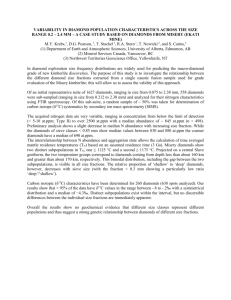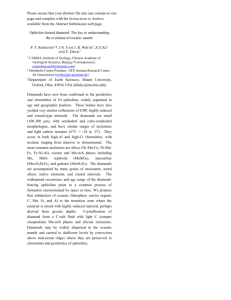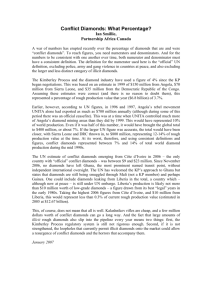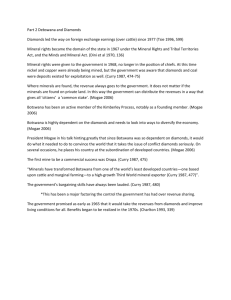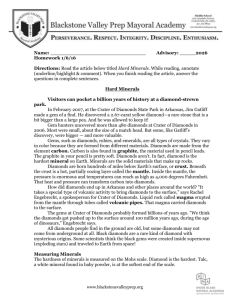EX17.13-solution
advertisement
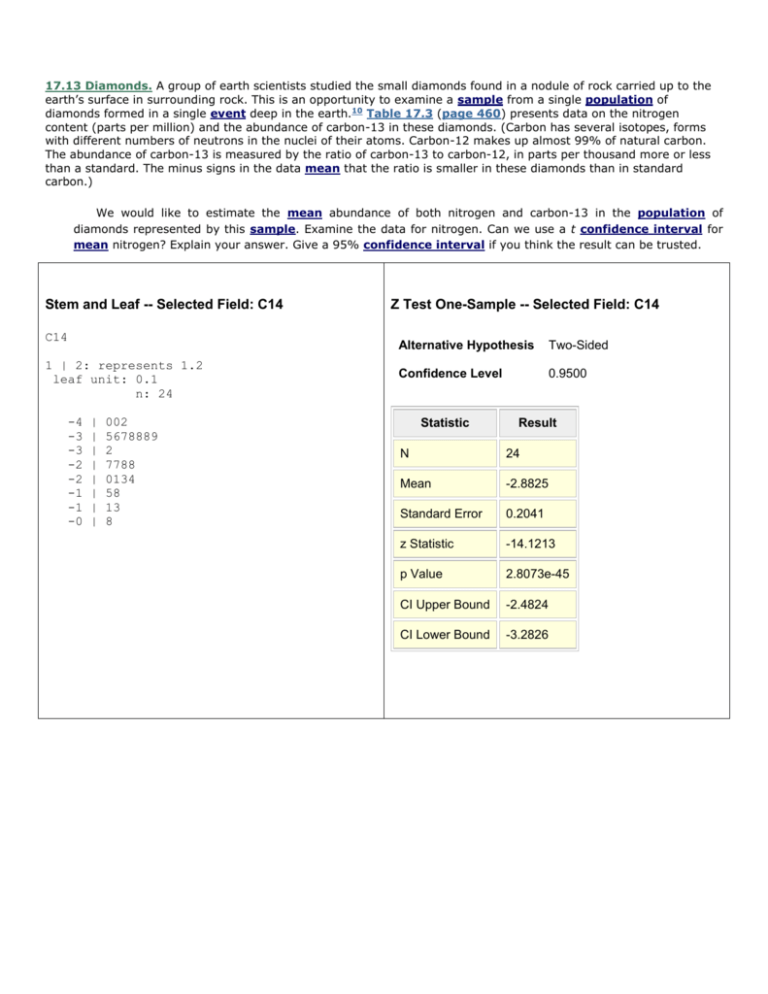
17.13 Diamonds. A group of earth scientists studied the small diamonds found in a nodule of rock carried up to the earth’s surface in surrounding rock. This is an opportunity to examine a sample from a single population of diamonds formed in a single event deep in the earth.10 Table 17.3 (page 460) presents data on the nitrogen content (parts per million) and the abundance of carbon-13 in these diamonds. (Carbon has several isotopes, forms with different numbers of neutrons in the nuclei of their atoms. Carbon-12 makes up almost 99% of natural carbon. The abundance of carbon-13 is measured by the ratio of carbon-13 to carbon-12, in parts per thousand more or less than a standard. The minus signs in the data mean that the ratio is smaller in these diamonds than in standard carbon.) We would like to estimate the mean abundance of both nitrogen and carbon-13 in the population of diamonds represented by this sample. Examine the data for nitrogen. Can we use a t confidence interval for mean nitrogen? Explain your answer. Give a 95% confidence interval if you think the result can be trusted. Stem and Leaf -- Selected Field: C14 C14 1 | 2: represents 1.2 leaf unit: 0.1 n: 24 -4 -3 -3 -2 -2 -1 -1 -0 | | | | | | | | 002 5678889 2 7788 0134 58 13 8 Z Test One-Sample -- Selected Field: C14 Alternative Hypothesis Two-Sided Confidence Level 0.9500 Statistic Result N 24 Mean -2.8825 Standard Error 0.2041 z Statistic -14.1213 p Value 2.8073e-45 CI Upper Bound -2.4824 CI Lower Bound -3.2826

